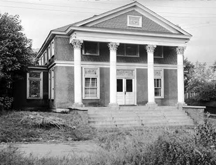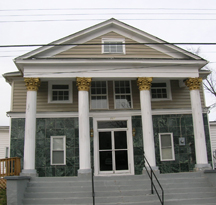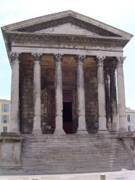Walking down West Main Street takes you back in time, when Starr Hill referred to a neighborhood, not a brewery and when the Railroad was the main means of travel in and out of the city.

If you keep your eyes peeled while walking you can spot century-old buildings, the structural remainders of those by-gone days. One beautiful example is a former church located on Commerce Street in the middle of the Starr Hill Neighborhood (bordering on the Vinegar Hill Neighborhood). This historic black church is surrounded by other structures associated with the African American community (e.g., the J.F. Bell Funeral Home, founded in 1917 and the Ebenezer Baptist Church, founded in 1892).

Up until recently, the building was home to the Charlottesville Church of Christ. In 1990 the congregation moved to a new building on 5th Street. Earlier in the century a different, African American congregation used the building. According to Professor Emeritus K. Edward Lay, the church was founded in 1919 and called the Bethlehem Apostolic Church or the Bethel Baptist Church. The building was built several years later, in 1922, and featured a stuccoed building with a Corinthian Tetrastyle Portico and stained glass windows. Today the stucco has been replaced with wood and tiles.
The building’s classical facade was inspired by Greek and Roman architectural styles.

Today, the capitals at the tops of the corinthian columns are colored gold (although this seems to be a newly added decorative feature). The green tile is also a newer addition (compare the 2008 photo to the historic one). A wide staircase leads to the narrow portico (or porch). This architectural style dates back to Roman times. One of the best preserved examples of a Roman Temple (and the impetus for the church facade) is the Maison Carrée in France. It was built over 2000 years ago (in 16 B.C.E.) and survived, in large part, because it was converted to a Christian church in 4th century. Today it is a museum.
